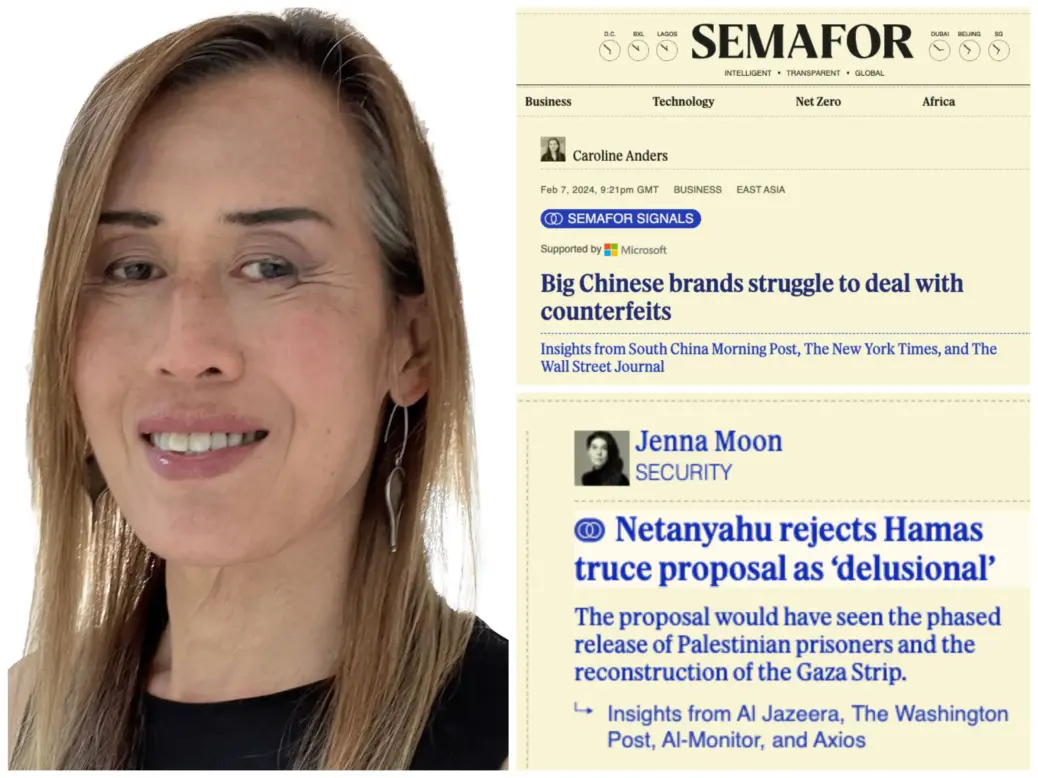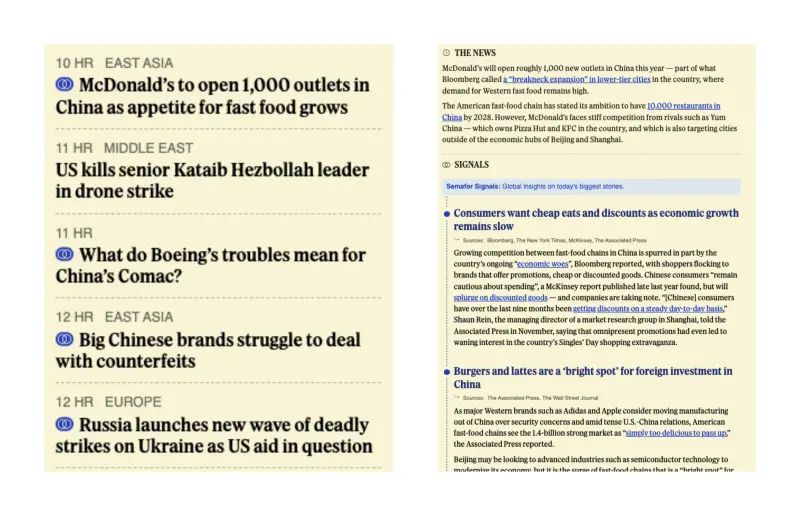
Signals, Semafor’s AI-driven news feed which is the subject of a “substantial” Microsoft sponsorship, was built not by the tech giant but by the start-up’s own newsroom.
The sponsorship deal, which sees Microsoft help Semafor to refine the tool, marks a new approach to generative AI companies for news publishers.
It also makes Semafor one of the first newsrooms to heavily and visibly incorporate ChatGPT into its workflow.
The move comes after Politico and Business Insider publisher Axel Springer brokered a deal in December that makes its content available in ChatGPT. Press Gazette revealed earlier this month that Politico is redesigning its websites to make it easier for Large Language Models like ChatGPT to read them.
News Corp revealed yesterday that it is close to striking financial deals with AI companies.
The New York Times, on the other hand, has launched a lawsuit against Microsoft and ChatGPT developer OpenAI, claiming its copyright was violated by the use of its stories to train the chatbot.
What is Signals, Semafor’s Microsoft-sponsored AI news feed?
At Semafor, Signals articles use a chatbot built on ChatGPT, plus Microsoft’s Bing search engine, to seek out additional angles on a news story. A reporter gives the AI the subject they want insight into and a few minutes later it brings them back a selection of relevant article summaries.
Signals articles are distinguished from the rest of Semafor’s output by a blue symbol next to the headline depicting two overlapping circles. Articles begin with a few paragraphs outlining the basic facts of a story before offering alternative angles on it, which are credited to named and linked sources.

The website is already making regular use of the new format, which was launched on Monday, with many of the breaking news stories on the site’s front page illustrated with the Signals logo.
Gina Chua, Semafor’s executive editor, told Press Gazette on Tuesday we are at “a revolutionary moment in the world of information in journalism”.
When Chua was executive editor of Reuters she managed the development of newsroom tools built on earlier AI technology, which would for example turn formulaic data like quarterly earnings reports into stories or scan social media for breaking news events.
Semafor has already been using generative AI to help proofread stories. The new tool came about when one of the outlet’s breaking news reporters, JD Capelouto, began tinkering with ChatGPT’s GPT Builder feature, which allows users to make customised versions of the chatbot.
“He started playing with something that helped you look further afield on any given topic and in more languages,” Chua said. “And we took that and we refined it to come up with what we’re calling MISO.”
MISO – short for Multilingual Insight Search Optimiser – is the name of the GPT that underpins Signals. It is also an inside joke.
“Our CMS is called Soup, so we have to have a soup reference somewhere in there.”
MISO summarises the reports it finds on other news outlets and links through to the full articles. “Obviously you don’t just trust the summary,” Chua said, “but the summary helps you search, in the same way that a search engine would.”
It doesn’t necessarily work for all stories: if news has only just broken, or it is a Semafor exclusive, there won’t be any analysis out on the web to gather yet.
Chua said MISO gives Semafor two things: “One, obviously, is it’s an efficiency tool – you could do all of these things by hand if you wanted to, but then you would be spending a lot of time searching.”
But fundamentally, she said, “it’s a breadth tool. At some point, efficiency turns into a difference in kind, not just a difference in speed…
“The fact that we have this, and we can search in languages that we might never have thought of searching, means that you will have more serendipity and, in theory and in practice, you will have better, more wide-ranging insights.”
Chua said Semafor has not yet observed many issues with MISO hallucinating – presenting information that is essentially made up as true – and reporters using the bot are, regardless, expected to use the summaries it provides as a signpost toward interesting analysis, not as the analysis itself.
For now though the greater roadblock is that MISO only works in English, Spanish and Mandarin.
The goal is for the AI to one day source perspectives on a story from all around the world, but for now it appears to favour familiar sources. Of 62 sources cited in the 12 Signals stories on Semafor’s front page when Press Gazette checked on Wednesday, only 15 were based in a country besides the US, UK or Australia. The New York Times had the most credits (seven), followed by Bloomberg (five) and Reuters (also five).
Chua acknowledged that when seeking out novel voices, “you want to err on the side of caution” while not sticking purely to the mainstream.
“It's all a judgement call as to what points of view stand up to scrutiny and which facts stand up to scrutiny. But that part of the exercise is very much what journalism is all about - it's making editorial choices.”
How did Microsoft get involved?
Both Semafor and Microsoft have been tight-lipped about how exactly the deal between the two companies arose and what its terms are. Asked who approached who, Chua said: “We've been talking to Microsoft about how we could use these things better.
“We continue to talk to them about the possibility of extending that technical help over into things like Co-pilot and so on to see whether any of these other tools that they have will allow us to do even more or more, or do it more efficiently.”
The Financial Times broke the news of the deal on Monday, reporting that a person familiar with the agreement said the sum being paid "is 'substantial' to Semafor's business".
Microsoft has said only that Semafor "will work with us to harness AI tools to assist journalists in their research, source discovery, translation, and more with Semafor Signals".
Chua could not say for certain whether Semafor had followed other publishers in blocking the web crawlers that feed content on the web into the large language models that power AI chatbots, but said: “I’m pretty sure we do not.”
Asked whether Semafor staff like Signals, Chua said: “As far as I can tell. No one's yelled at me in the corridor.”
There is no mandate for reporters to use MISO, she added. But “it helps you do your work better, it gives you better output - in effect, what’s not to like”?
Since it was built using OpenAI's GPT Builder, there is nothing proprietary about MISO, and anyone - including other publishers - can build their own versions.
“We hope to keep refining it and we hope to keep leveraging its capability to the extent that we're using it in formats and new story types that other people aren't using," Chua said.
"And obviously, it's part of our - not quite IP, but it's certainly part of our brand, and part of the way we do things. Anyone is welcome to build a bot any way they want.”
Email pged@pressgazette.co.uk to point out mistakes, provide story tips or send in a letter for publication on our "Letters Page" blog
